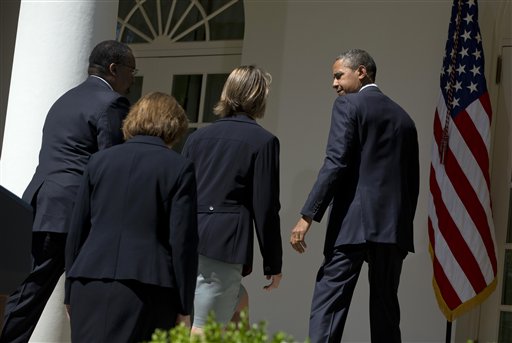The battle for three presidential nominations to the D.C. Circuit Court of Appeals is starting now, but the reason for the war is potentially far in the future.
Videos by Rare
With the Senate poised to vote on the confirmation of Patricia Ann Millett, a Washington lawyer, to one of three vacancies on the nation’s second-highest court, the threat to filibuster her nomination by Republicans is not a response to where she is going, but rather where she has the potential to go.
Lifetime appointees to the D.C. Circuit Court of Appeals often decide the constitutionality of presidential acts and the legality of federal agency’s policies. That makes the selection influence of the sitting president a significant source of long-term power, but even more so is the fact that the second-highest court has become a selection pool for the first.
Four current Supreme Court justices were selected out of the D.C. Circuit Court of Appeals over the last 30 years including Chief Justice John Roberts eight years ago, whose seat Millett has been nominated to fill.
The fact that Roberts’ seat has been empty for almost a decade shows just how contentious these nomination fights have become, especially amid wide speculation that President Obama may have an opportunity to appoint a judge to the high court seat held by Justice Ruth Bader Ginsburg before his second term ends.
Millett and second nominee Cornelia Pillard were passed in the Senate Judiciary Committee strictly by its majority of Democrats, with third nominee U.S. District Judge Robert Wilkins expected to do the same. A vote for confirmation in the whole chamber is where the real fight starts, where Democrats will need the support of at least five Republicans to reach the crucial 60 votes required to break a filibuster already promised by Republicans.
Democrats have added more fallout to the fight by re-introducing the “nuclear option,” which would permanently alter the rules of Senate judicial appointments to require a simple chamber majority to vote in the affirmative. If adopted, which again would only require the support of Democrats, President Obama could appoint judges without the need for any Republican approval.
The potential ideological scales of the Supreme Court itself hang in the balance. The current makeup of the court is more or less evenly divided, with four liberal-leaning justices – including Ginsburg – and four conservative-leaning, with Justice Anthony M. Kennedy providing the swing vote, which more often than not swings right.
If Ginsburg holds out on retirement beyond 2016 and Senate Republicans block any nominations during President Obama’s second term, four of the court’s justices will be over 77, leaving the possibility for future appointments in the hands of a potential President Rubio, Bush, Jindal, Christie, or Clinton.
Given Nevada Democrat and Senate Majority Leader Harry Reid’s seemingly legitimate nuclear option threat, and the likelihood Democrats will keep the Senate in 2014, no successful judicial appointments during Obama’s second term is unlikely. Republicans will have to pick their upcoming battles in the Senate carefully to avoid losing a war in the long-term.
Related articles
- Judicial Confirmation Clash Looms Over Obama’s Nominees (bloomberg.com)
- Reid Files Cloture on Nominee, Second-Most Influential Court could Turn in Obama’s Favor (townhall.com)
- Patrick Leahy: ‘Insurmountable’ Push For Filibuster Rules Change If GOP Blocks Obama Nominee (huffingtonpost.com)



